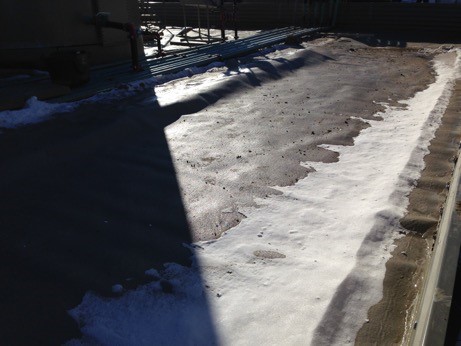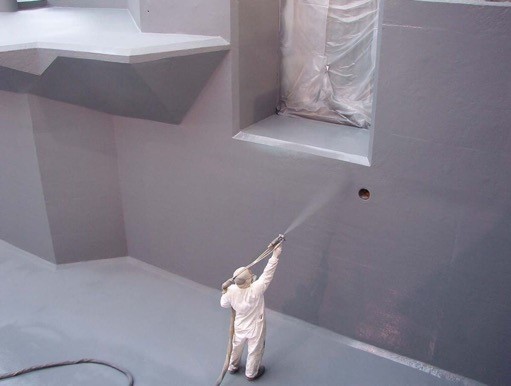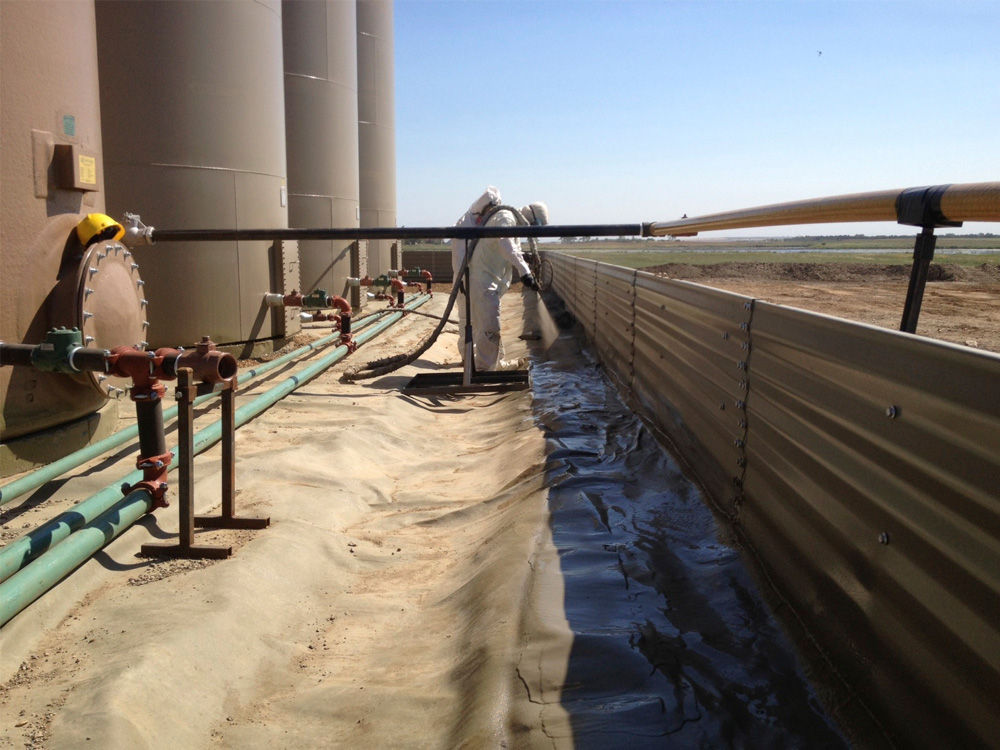One of the most appealing aspects of polyurea is its extreme resistance to hydrocarbons (i.e. crude oil, fracking fluid, hydrocarbon contaminated saltwater, and common combustion fuels). AG7123 CRS
BENEFITS OF POLYUREA
Polyurea coatings offer many advantages over their traditional counterparts (HDPE, LLDPE, ethylene based coatings, and epoxies). The following list highlights a number of polyurea’s advantages.
Polyurea secondary containment liner will outlive the life of any well site it is utilized at. With its incredible resistance to the environment and chemical attacks a 60mil polyurea liner will last 60+ years on site. This requires no additional maintenance or replacement, unlike HDPE liners which tear easily and typically do not last the life of a well site.
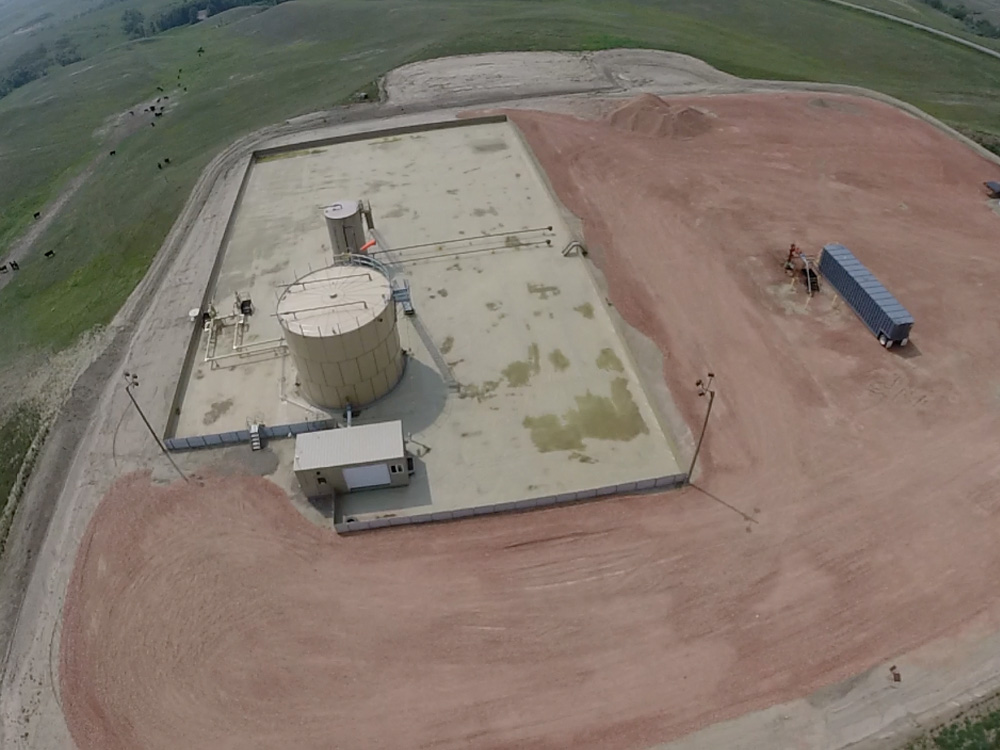
Polyurea has exceedingly adequate physical properties in regards to abrasion, tensile strength, tear strength, puncture resistance, and elongation. In addition to this, there is no permeability. With these high levels of durability, it virtually eliminates the risk of leaks or other environmental issues.
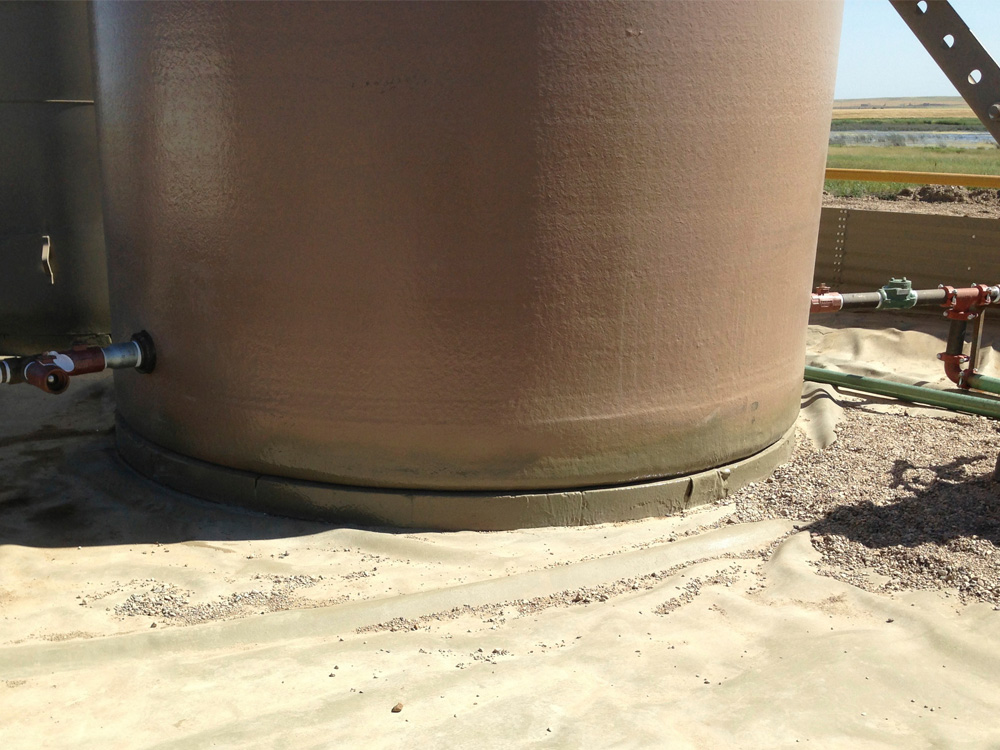
Pure polyurea has substantial resistance to mild acids, bases, and solvents (Table Below). This aspect along with hydrocarbon resistance is not only substantial over HDPE, but also over Hybridized polyurea as well.
- Mix Ratio by Volume ................................................ 1A : 1B
- Pot Life @ 150°F ...................................................... 3 - 5 secs
- Tack Free Time ......................................................... 60 - 120 secs
- Recoat Time .............................................................. 0 - 6 hours
- Viscosity at 150-160°F (66.5-71°C), Brookfield:
Part-A ....................................................................... 50 ± 20 cps - Part-B ....................................................................... 50 ± 20 cps
- Density (Side A & B Combined) .............................. 8.75 lbs/gal
- Flash Point ................................................................ > 200°F
- Hardness, ASTM D-2240* ....................................... 85 ± 5 A
- Tensile, ASTM D-412* .............................................. 3000 ± 200 psi
- Elongation, ASTM D-412* ........................................ 650% ± 50%
- Tear, ASTM D-412* .................................................. 450 ± 50 pli
- Service Temperature ............................................... -40°F to 300°F
- Water Vapor Permeability, ASTM E-96 ................... 0.00042 gm/hr . in2
- VOC Content ............................................................ 0 gm/lit
- Recommended Applied Thickness .......................... > 2 mm
- Return to Service: Foot Traffic ............................... 1 - 4 hours
- Return to Service: Full Service ............................... 10 - 24 hours
- Taber Abrasion Resistance, ASTM D-4060
(CS17 wheel, 1000 cycles, 1 kg load) (maximum) ............ 28.1 mg loss - Water Absorption, ASTM D471
(max 23°C, 24 hrs) .................................................... < 0.5% - Crack Bridging, ASTM C836
(-25°C, 1.6mm crack, 25 cycles) .............................. Pass - Impact Resistance @ 25°C ....................................... > 200 lbs
- Pull-Off Strength (minimum), ASTM D-4541:
Inter-Coat Adhesion (within recoat time) .......................... Excellent - Concrete (Shot blast and primed profile), substrate
failure occurred ......................................................... > 500 psi - Steel (75-100 micron blast profile) ......................................... > 900 psi
- Lineal Shrinkage ........................................................ 1 - 2%
- Flexibility 1/8”(3mm) Mandrel Bend Test, ASTM D1737 ..... Pass
- Resistance to Weathering, ASTM G-23
(Type DH Weatherometer-2000 hrs exposure) .................... No cracking or blistering. Color change, gloss reduction & chalking are noted.
(*These physical properties from sample sprayed with Graco Foam Cat 200 @ 2000 psi minimum, with Gusmer GX7-400 mechanical purge gun @ 150-160°F. Different machine and parameter will change these properties. User should perform their own independent testing as properties are approximate.)
Polyurea offers a monolithic coating with consistency and durability HDPE simply can not achieve. Polyurea offers three times or greater the puncture resistance and 600% elongation. Polyurea will last the life of the well site without maintenance whereas HDPE does not. Also, polyurea as stated previously does NOT break down under UV exposure whereas HDPE does degrade in the presence of UV light.
In terms of performance, unlike polyurea, epoxies require a catalyst. They are sensitive to temperature, humidity and moisture, giving them a narrow window for application. Unlike polyurea, epoxies have extensive cure time and little or no elongation properties. This leads to frequent failure of the coating with expansion or movement of the substrate
Polyurea can be applied in a wide range of temperatures and weather conditions. This allows polyurea to be used year around and also in typically un-friendly coating environments. Polyurea can be applied in -30°F (-35°C) up to 250°F (121°C). Pure polyurea will remain flexible even when exposed to very low temperates. it is also excellent UV stability. In the harshest of environments.
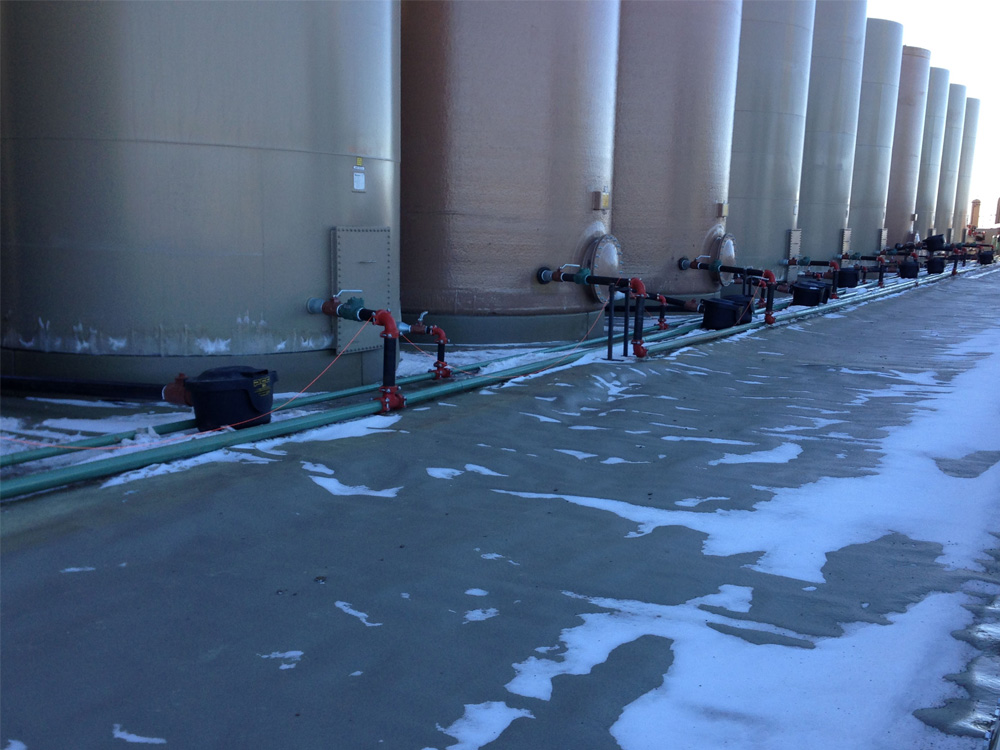
Polyurea offers an unmatched level of protection to the permeable ground beneath it. With zero permeability, highest puncture resistance, and resistance to all oil & gas chemicals found on site, there is a monolithic security blanket protecting the ground below each well site location. Ensuring no site leak or failure if a spill occurs not only saves thousands or possibly millions in cleanup expenses, but provides a strong barrier from spills reaching the environment. In this type of application, polyurea readily conforms to footings, pipes and protrusions to form a complete seal.
